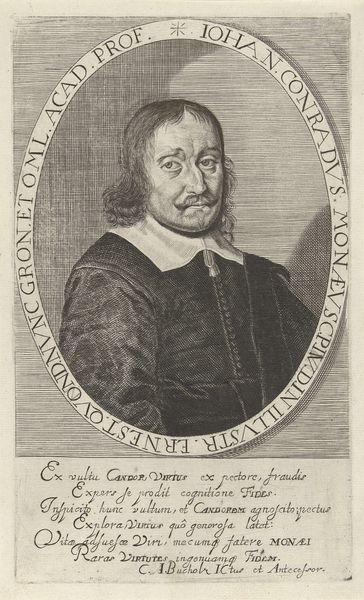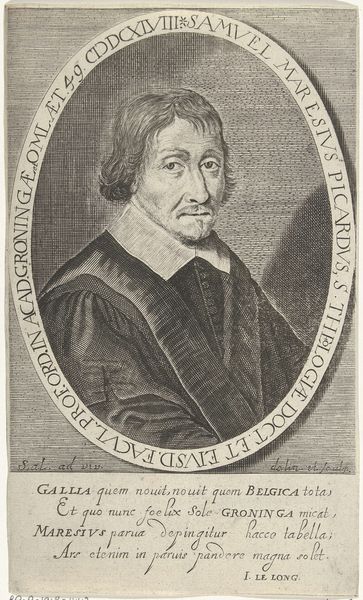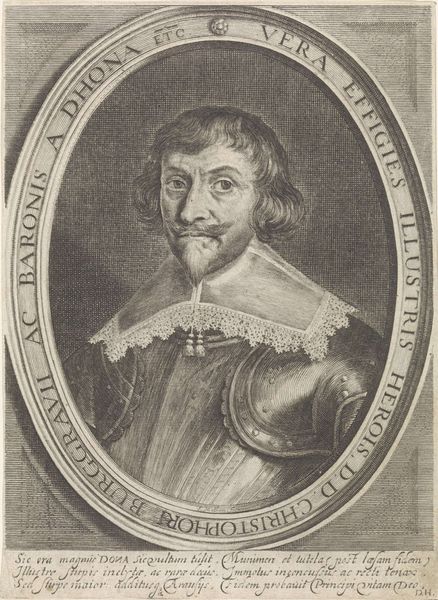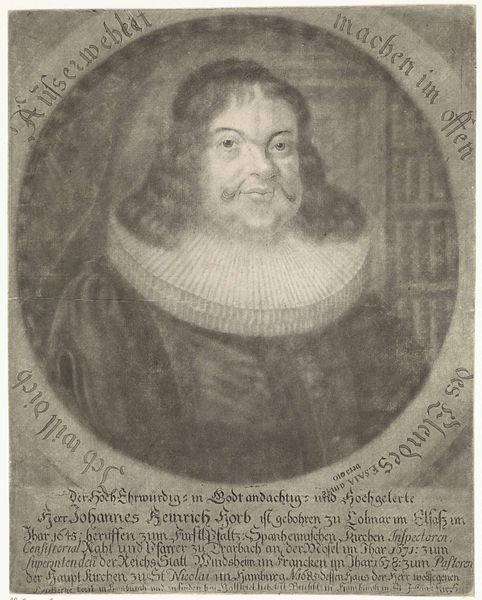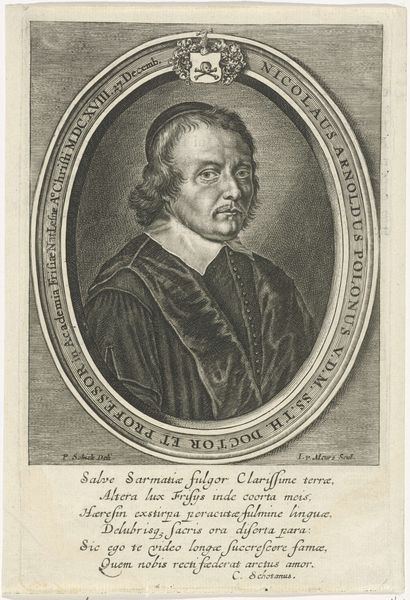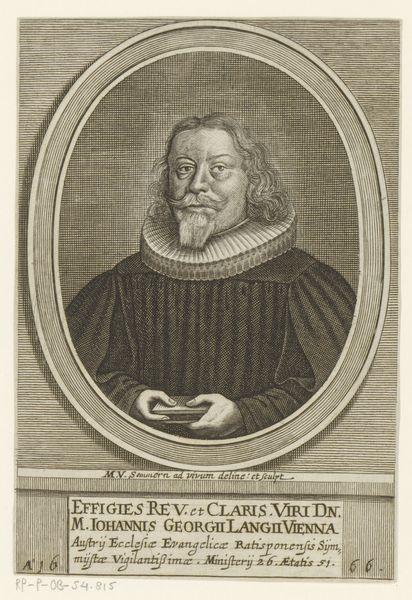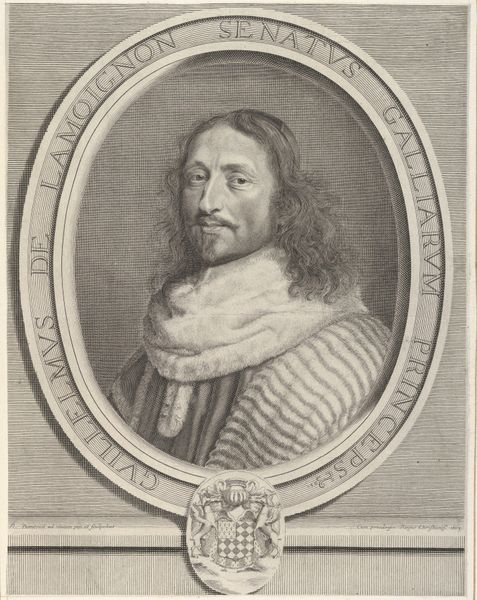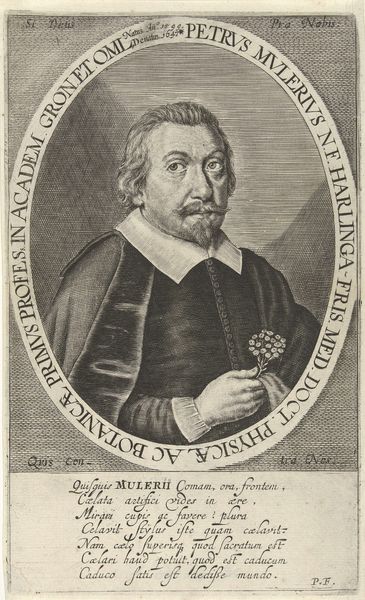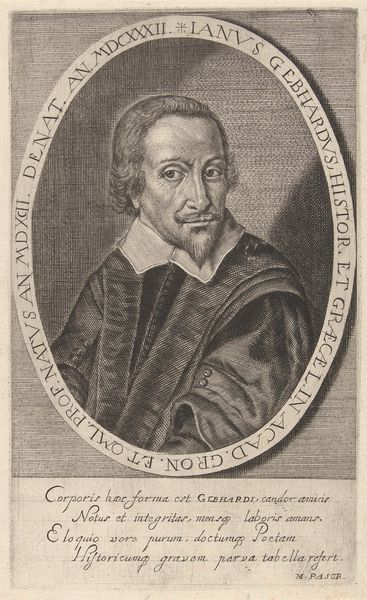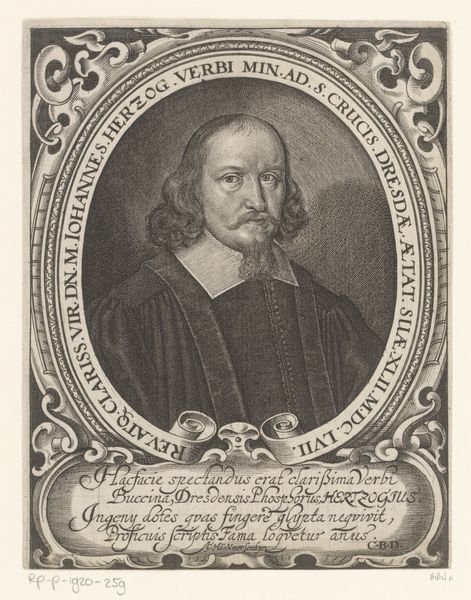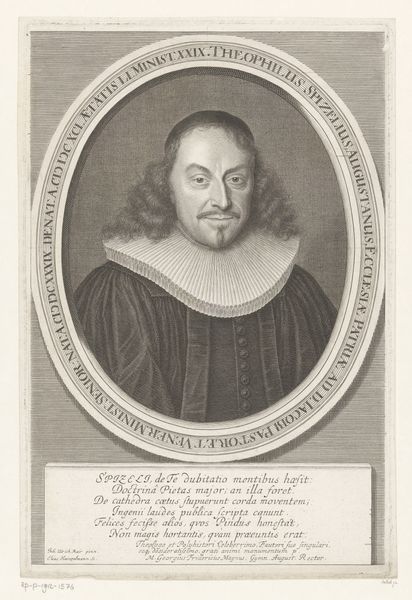
print, engraving
#
portrait
#
baroque
# print
#
history-painting
#
engraving
Dimensions: height 220 mm, width 129 mm
Copyright: Rijks Museum: Open Domain
Curator: This is a fascinating portrait of Tobias Andreae, made in 1654 by Steven van Lamsweerde. It's an engraving, offering a window into the Dutch Baroque period. Editor: The first thing that strikes me is the starkness of it. It's just black ink on pale paper, creating these very fine lines. What type of labor goes into creating something like this, by hand, without today’s industrialization or even the convenience of photography? Curator: The power of prints lies precisely in that repeatability. Think about it: Andreae was a professor and librarian at the University of Groningen, and an image like this would have circulated widely. His likeness becomes symbolic, linked to intellect and learning. Note the inscription encircling his portrait: “L. Gr. Pr. Ord. et Biblioth,” marking his role. Editor: You're right, the texture has this amazing tactile quality despite being a printed image. Looking closely, you can see that the different sections would involve various materials beyond just the plate. Paper, ink and the mechanism of the press. It’s compelling to understand this reproducibility, given that we live in the age of the digitally ubiquitous. The portrait immortalizes the man, but also reveals a specific cultural-material condition through print production. Curator: Absolutely. The baroque elements are restrained here, more about conveying status and intellect through carefully controlled lines and the text itself rather than overt displays of wealth. It speaks to a particular kind of intellectual identity and the role that portraits played in cementing it. The detail on his lace collar and cuffs contrasts with the dark simplicity of his robe, marking profession, wealth, social position. Editor: Thinking about that circulation you mentioned earlier: engravings made art accessible, forming this almost proto-mass-media, long before digital copies or mass printing, the circulation of images formed, shifted and created society! How else was he known outside of his university, his region? Curator: It raises intriguing questions. Images like this served as more than just personal likenesses; they were crucial to shaping historical memory, linking faces to institutions and ideas. The subtle play of light and shadow, achieved through skillful engraving, gives Andreae's face a presence, inviting contemplation. The images carry weight even today. Editor: I now see this engraving not merely as a historical object, but as an artifact reflecting its mode of creation, a relic that speaks volumes about the value placed on disseminating images and their associated symbols of success and prestige.
Comments
No comments
Be the first to comment and join the conversation on the ultimate creative platform.
